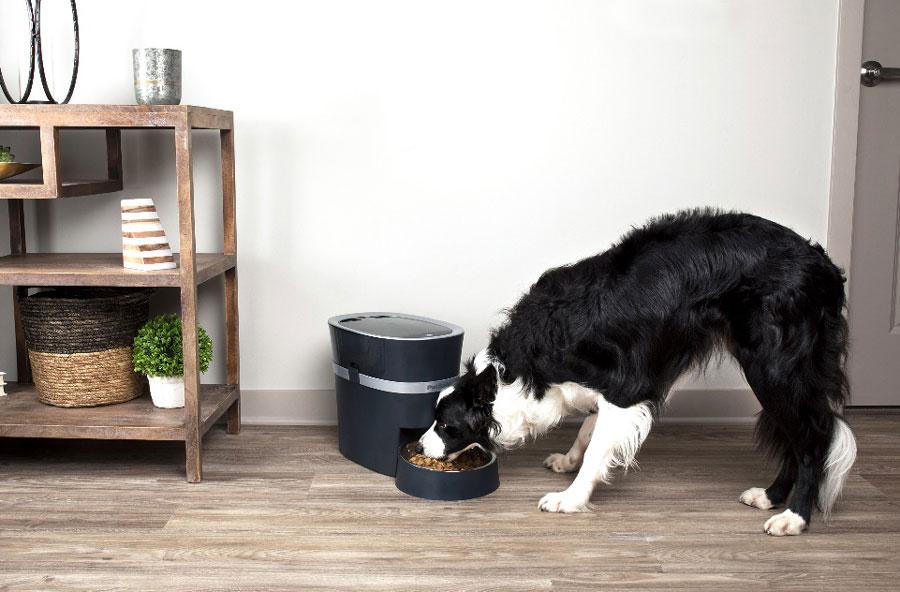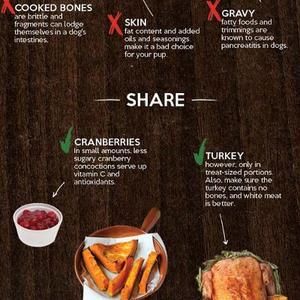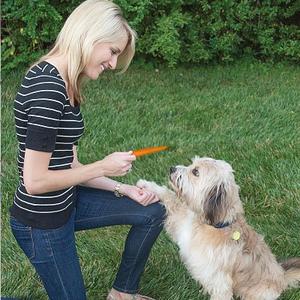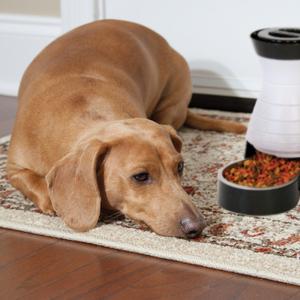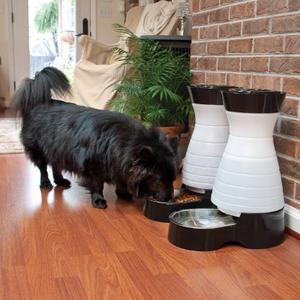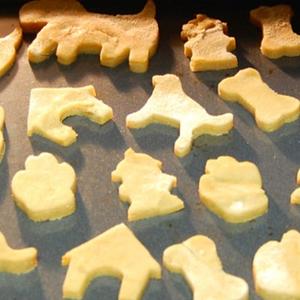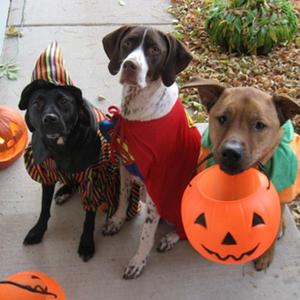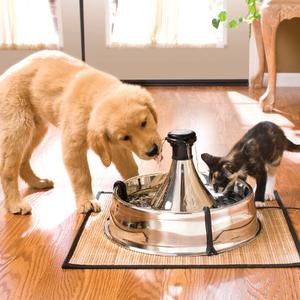You pay close attention to what you and your family eat. You avoid processed foods, pay a premium for organic groceries and read labels religiously. But are you as persnickety when it comes to the diets of your cats and dogs?
For many pet parents, the answer is no. Their pets eat what is plucked from the grocery shelf and put in front of them. But careless dietary choices can expose pets to many of the same problems their parents experience if they aren’t thoughtful about what goes in their bodies: Heart disease, cancer, obesity, circulatory and digestion issues, diabetes, exposure to toxins and overall poor health.
Since pets and their health are at the heart of everything PetSafe does, we are pleased to provide some basic information on the importance of pet nutrition and how to go about ensuring your cats and dogs are eating as well as the rest of the family. Our automatic dog and cat feeders make caring for your pets convenient and hassle-free, and can control portion size, but it’s up to you to make sure the feeders are filled with goodness.
Most dogs and cats in the U.S. eat food and treats manufactured specifically for their particular species. Holistic veterinarians focus on the quality of nutrients entering pets’ bodies and strive to get them on whole-food-based diets with the same grade of nutrients consumed by humans. By providing their pets with commercially available dry and moist foods and treats – and under a barrage of buzzwords highlighting their supposedly nutritious nature -- pet parents are lulled into a false sense that their pet’s best health is being served. That is not always the case. In fact, pet parents can inadvertently poison their furry family members.
Let’s consider why pet food may be a good or bad choice for your pet, starting with ‘the good.’
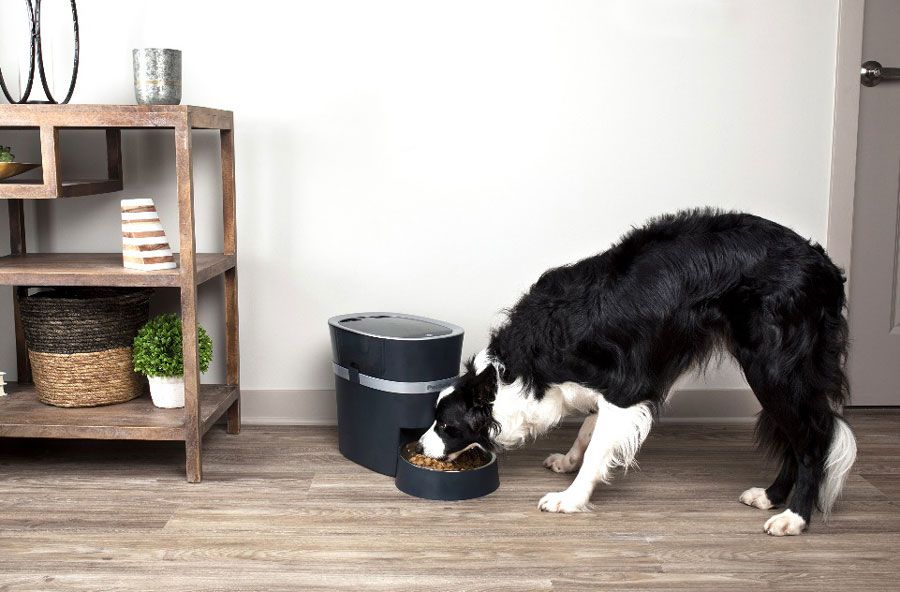
The Good
Automatic feeders can make feeding your pets even more convenient. Even with a busy schedule, you won't have to worry if your pet has had their breakfast or dinner.
Convenience
When feeding most commercial foods, pet owners benefit from the convenience of opening a bag of dry food or a can of wet food, or defrosting and serving frozen pet food. As our society has become more focused on convenience instead of health, processed foods requiring little to no preparation have become popular among pet owners.
Nutritionally Complete and Balanced
Commercially available pet food is required to be nutritionally complete and balanced for all life stages, which gives the pet owner a degree of certainty that their companion animal will consume a combination of proteins, fats, carbohydrates, fiber, vitamins, and minerals to meet their nutritional needs.
Labeled List of Ingredients and Recommended Feeding Guidelines
Commercial diets and treats are regulated by the Food and Drug Administration (FDA) and the product’s label is legally required to include “proper listing of all the ingredients in the product in order from most to least, based on weight” along with Guaranteed Analysis (percentages of crude protein, fat, fiber, and moisture).There is also a guideline for the daily quantity of food recommended to be fed based on pet body weight. Now let’s move onto ‘the bad.’
The Bad
Feed-Grade Ingredients Cooked at Nutrient-Destroying Temperatures
Unfortunately for our pets, nearly all commercially available dog and cat food is made with ingredients considered to be feed-grade instead of human-grade. Feed-grade ingredients are lower quality than human-grade.
Additionally, feed-grade ingredients have allowances for toxins, such as mold-produced mycotoxins, that are acceptable in significantly reduced quantities in human-grade foods. Meat ‘meals’ such as ‘meat and bone meal’ and ‘by-products’ come from the rendering process and can contain “dead animals from farms, ranches, feedlots, marketing barns, animal shelters, and other facilities; and fats, grease, and other food waste from restaurants and stores.” (according to the National Agricultural Law Center).
Another contaminant that can come along with these dead animals is pentobarbital, an anesthetic used to euthanize animals (confirmed through FDA testing of dog foods). Even the less questionable ingredients may not be as nutritious as you think. Dry (kibble) and canned foods are cooked at high temperatures to kill bacteria, but which also deactivates beneficial enzymes and denatures protein’s more bioavailable form. Similar to microwaving or “nuking” your food, this reduces the nutrients in your pet’s food.
Chemicals & Preservatives
Butylated Hydroxyanisole (BHA), Butylated Hydroxytoluene (BHT), and Ethoxyquin are 3 nasty chemical preservatives. BHA and BHT are chemicals added to oils (fats) as preservatives that can be found in pet foods and treats. According to California’s Office of Environmental Health Hazard Assessment, BHA is on the list of Known Carcinogens and Reproductive Toxicants. BHT is also a carcinogen and causes kidney and liver damage in rats.
Ethoxyquin is another chemical preservative which is illegal to use in human foods in the United States, yet can still legally be added to pet foods. Human safety data reports Ethoxyquin to be harmful if it is swallowed or directly contacts skin. Ethoxyquin often enters through ‘fish meal’ and may not even appear on a label. It’s best that your pet’s food and treats have no preservatives, but natural options like Vitamins C and E are safer choices.
Propylene Glycol (PG) is a humectant (moistening agent) found in some soft dog foods and treats. It is chemically derived from ethylene glycol (EG), also known as antifreeze, which is extremely toxic to animals.PG is touted as non-toxic and non-absorbent for your pet, but consuming ‘pet-safe’ antifreeze’ will not improve your pet’s health.
Food Dyes
Blue 2, Red 40, and Yellow 5 and 6 have been documented to contribute to hypersensitivity (allergic-type) reactions, behavior problems, and cancer in humans. More recently, caramel color has come under fire as it contains 4-methylimidazole (4-MIE), a known animal carcinogen. When it comes down to it, artificially coloring food only appeals to humans and not pets.
Rendered Fat
Rendered animal fat provides flavor enhancement for kibble and is a source of microorganisms (Salmonella, etc.) and toxins (heavy metals, etc.) If moisture penetrates a dry food bag, then harmful bacteria and mold can flourish.
Contaminants
According to FDA Compliance policy CPG Sec. 675.100, the FDA “does not object to the diversion to animal feed of human food adulterated with rodent, roach, or bird excreta.” Therefore, your dog or cat may be eating such undesirable and disease-causing substances otherwise not permitted in human foods.
Meeting our pet’s nutritional requirements, but doing so with sub-standard quality and potentially toxic ingredients, can cause both short and long-term health consequences. For your pet’s sake, offer a diet of human-grade, whole-food-based ingredients early in life and minimize the consumption of dry and canned diets and treats.
Pet Food Shopping List
What to look for in a dry/wet food:
- Natural preservatives (Vitamin C/E) or no preservatives
- Made in the U.S.A.
- Human-grade ingredients (although there are very few foods that can put this on their label and you won’t find this on any packages of kibble)
Ingredients to avoid:
- Corn and wheat gluten
- Meat and grain meals and by-products
- BHA (Butylated Hydroxyanisole)
- BHT (Butylated Hydroxytoluene)
- Ethoxyquin
- Food Dyes (Blue 2, Red 40, Yellow 5 and 6, 4-MIE)
- PG (Propylene Glycol)
- Rendered fat

